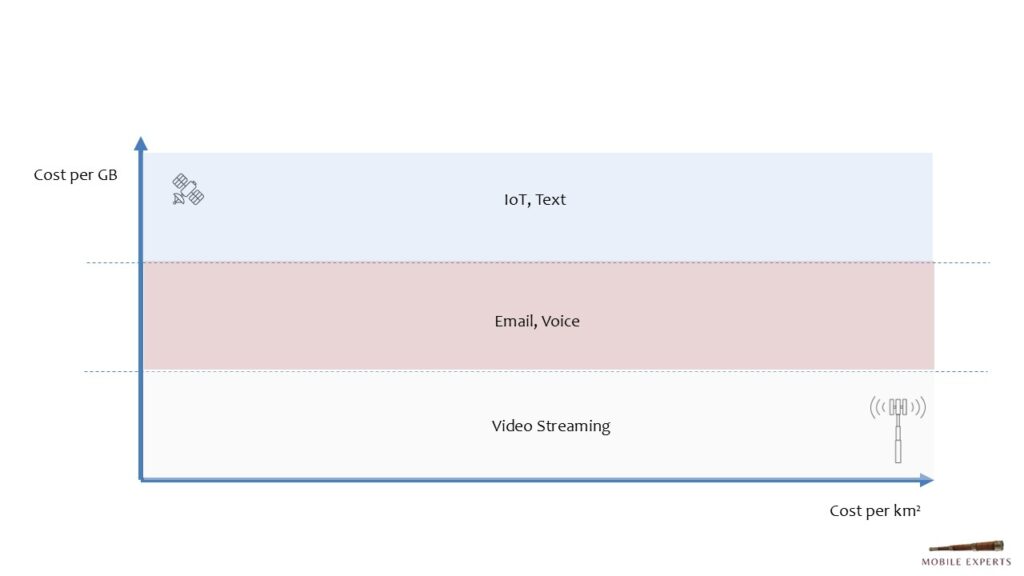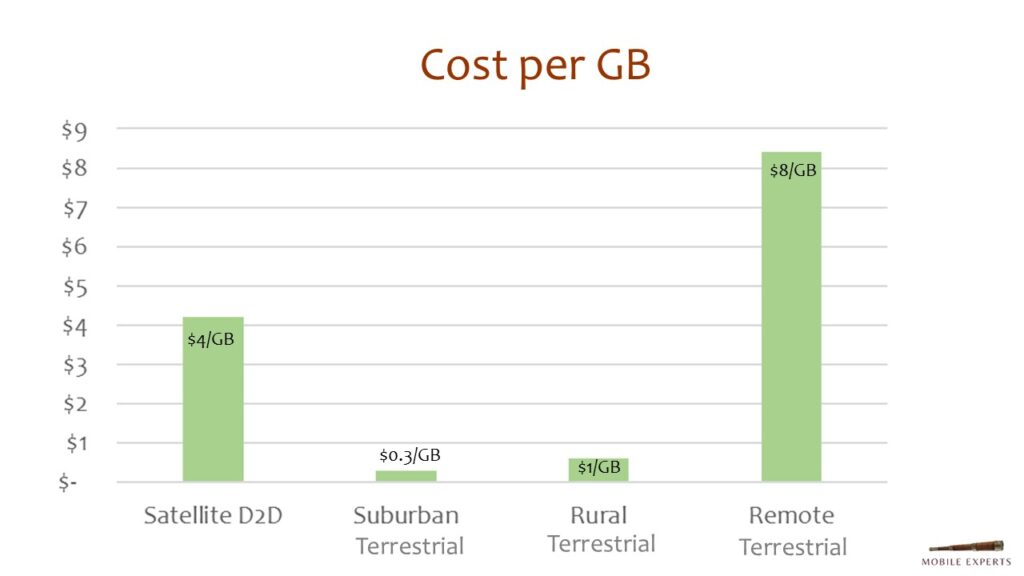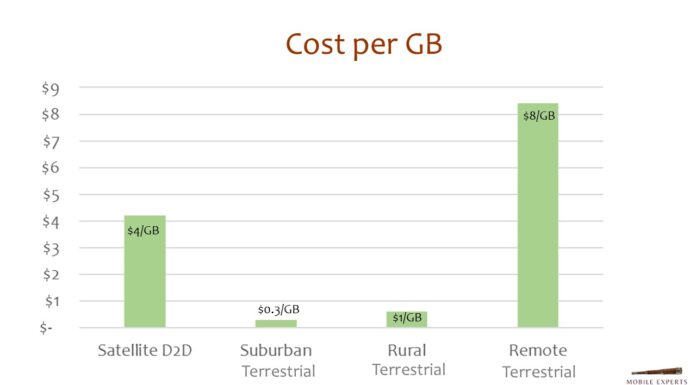Multiple companies have asked me to analyze this question: will D2D replace the rural cell site? Would it make sense for an operator to shut down a remote site, and simply let the users fall back on NTN coverage from space?
As usual, I don’t answer this kind of question with a gut response…I break out the spreadsheets and start looking at the numbers. It’s clear that satellites offer incredibly cheap coverage, but for me the question is whether satellite-based connectivity is cheap enough for users to rely on it for voice or streaming data.
Even if the cost per bit is high, bursty services like texting or IoT can be profitable. But nobody wants to sell video streaming services if the bandwidth cost is higher than a critical level.

At Mobile Experts, we have some cost models that have been validated and vetted by at least 20 different operators in various exercises over the years. Applying these cost models to the NTN question, we see that the cost per GB can, in fact, be lower for a satellite service than for some remote cell sites, when the cell site requires multiple microwave backhaul hops or other extraordinary measures to establish backhaul.
The D2D cost per GB for a generic constellation of 1000 satellites comes out to about $4/GB, assuming a large and sophisticated antenna array on the satellite. That’s much higher than the $0.30/GB cost for mobile operators in a typical urban/suburban setting. But it’s a lot quicker and better than digging a hundred miles of trench for a fiber, setting up multiple backhaul hops, or other methods for remote sites. Based on this simple comparison, we might say that NTN could replace the remote terrestrial site altogether. For a service that is offered “nationwide”, a satellite constellation could be the best way to fill in all of the blank spaces on the map.

But we shouldn’t make that conclusion so quickly. There are a few problems with the NTN approach: It won’t work indoors, or through the roof of your car. So a truck driver on a lonely highway won’t be able to use his phone without stopping.(We can all agree that we want the truck drivers to stop driving to use their phones, but let’s be realistic; they want navigation apps and texting and other services to work while they’re driving)
And yes, I will acknowledge that costly multi-hop backhaul may become a thing of the past, because nowadays we can use a Starlink broadband connection for backhaul at a lower capital cost. In the Starlink-backhaul case, the remote terrestrial site could be more attractive than NTN for serving a small town.
Our conclusion has been published in a more detailed 35-page report. Non-Terrestrial Networks and D2D services will reduce the number of remote cell sites deployed for government coverage requirements, but it won’t eliminate the practice altogether. A few thousand new tower sites are normally established each year. That number could drop in half.

